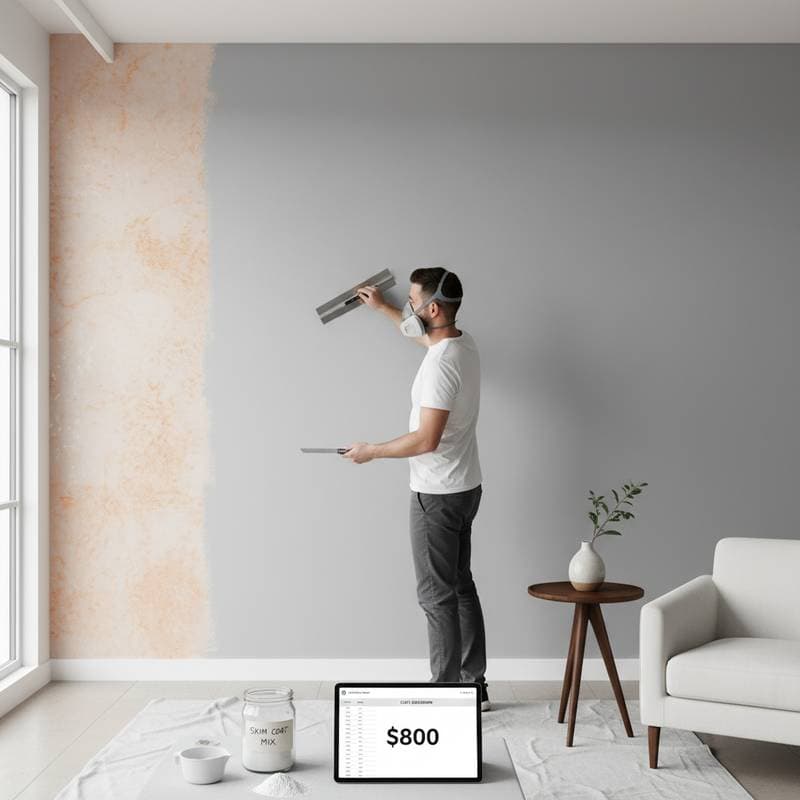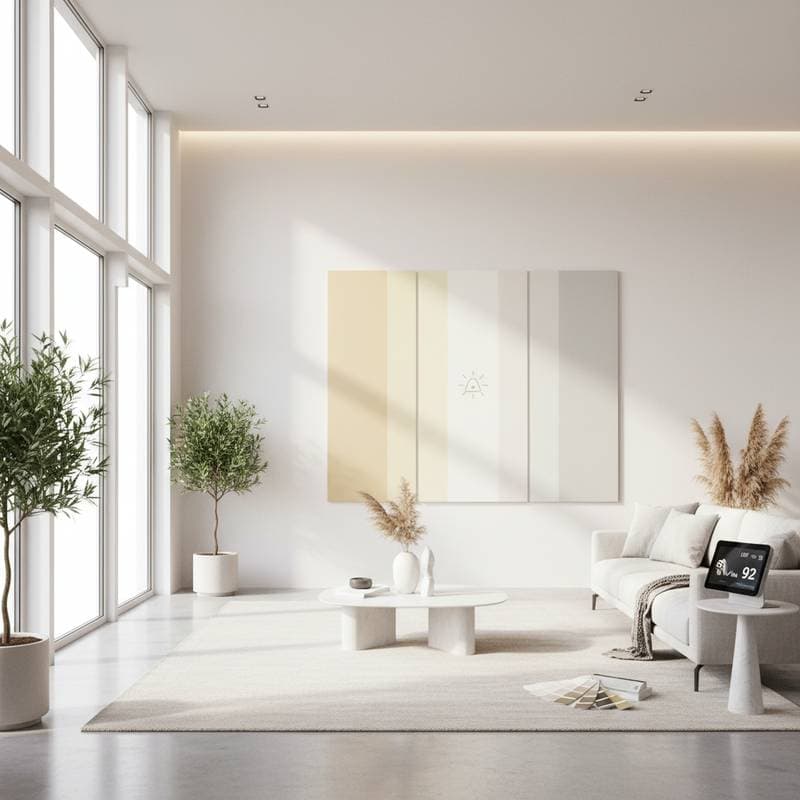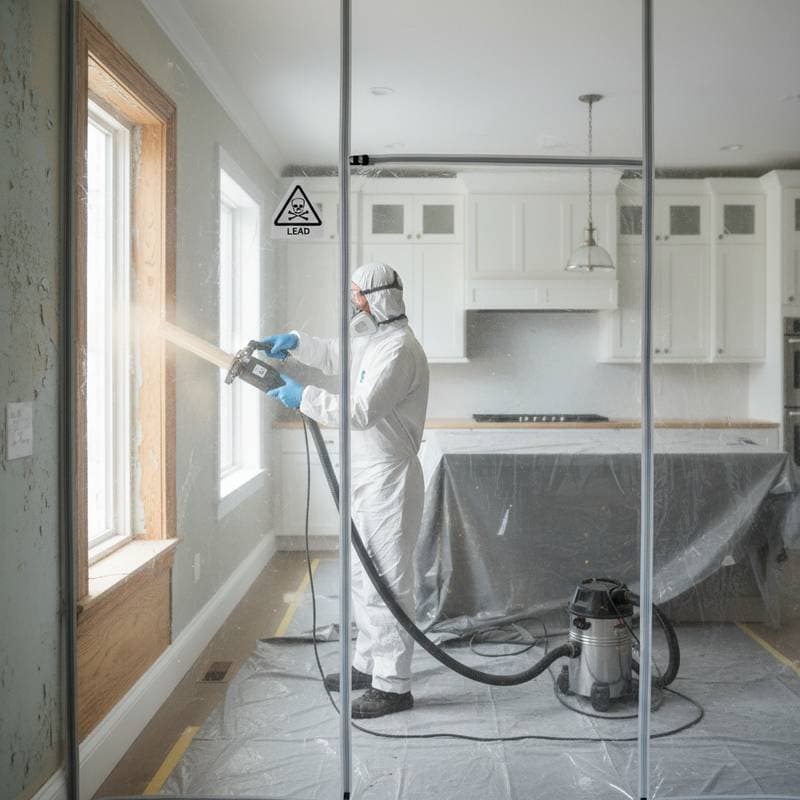Why Limewash Paint Leads Wall Finishes in 2025
Limewash paint gains prominence among homeowners desiring texture, character, and natural elegance in their spaces. Historically linked to European exteriors and preserved architecture, this finish now enhances contemporary interiors. Its matte surface, dynamic layering, and sustainable makeup appeal to those preferring organic warmth over uniform, synthetic alternatives. Grasping its popularity drivers and cost comparisons equips homeowners to approach projects with informed decisions.
Limewash Paint Cost Overview
Limewash paint applications generally cost between $3 and $8 per square foot, encompassing materials and labor. For typical interior work on drywall or plaster, expenses average $5 per square foot. Exterior projects fall between $1.50 and $5 per square foot, influenced by surface preparation and texture demands.
Average Costs by Project Scale
- Small room (100 sq. ft.): $300 to $800
- Medium room (250 sq. ft.): $750 to $2,000
- Large room (400 sq. ft.): $1,200 to $3,200
Exterior costs fluctuate with surface and access. A one-story brick house may total $2,000 to $5,000, whereas two-story structures climb to $6,000 to $12,000 from added labor and equipment needs.
Breakdown of Costs Per Square Foot
Limewash painting expenses comprise:
- Materials: $1 to $3 per sq. ft.
- Labor: $2 to $4 per sq. ft.
- Preparation and repairs: $0.50 to $1 per sq. ft.
- Finishing layers or sealing: $0.50 to $1 per sq. ft.
Final figures hinge on coat quantity, wall state, and use of primers or fixatives for enhanced longevity.
Factors Influencing Limewash Paint Costs
Key elements shape limewash expenses, enabling precise budget planning and surprise avoidance.
1. Surface Material and Condition: Limewash adheres optimally to porous substrates such as brick, stone, or plaster. Sealed or non-porous drywall necessitates a mineral primer, increasing both supplies and application time. Uneven or flawed walls demand patching and smoothing prior to coating.
2. Application Technique: Conventional methods apply several thin brush coats to build depth and variation. Artisans skilled in multi-layer or custom patina effects charge premiums. Basic single-coat options prove more affordable yet deliver simpler visual outcomes.
3. Quality of Limewash Product: High-end formulations with slaked lime and pure pigments exceed budget options in price. These superior mixes offer superior breathability, longevity, and graceful aging, justifying the investment for sustained performance.
4. Labor Expertise: Distinct from latex painting, limewash demands precise brushwork for uniform results. Professionals versed in mineral coatings command higher rates, yet their proficiency yields flawless, textured finishes.
5. Location and Access: Local labor wages, supply access, and site challenges affect totals. High-demand urban areas or restricted sites elevate costs compared to rural settings with ample resources.
Cost Analysis by Finish Quality
| Finish Type | Basic Range | Standard Range | Premium Range | Key Differences |
|---|---|---|---|---|
| Interior Limewash | $3 - $4 | $4 - $6 | $6 - $8 | Coat count, pigment intensity, prep level |
| Exterior Limewash | $1.50 - $3 | $3 - $4 | $4 - $5 | Weatherproofing, sealants, durability |
| Textured Limewash | $4 - $5 | $5 - $7 | $7 - $9 | Brush methods, color gradients, layering |
The Unique Appeal of Limewash Paint
Limewash attracts with its aesthetic depth and green credentials. The finish creates a diffused, velvety surface that scatters light softly and unevenly. Penetrating rather than coating, it permits wall breathability and moisture management, minimizing mold and flaking risks.
Derived from heated and slaked limestone blended with earth pigments, limewash avoids volatile compounds and plastics. This composition suits environmentally aware individuals pursuing low-impact options. Its inherent variations impart artisanal, enduring charm unattainable by conventional paints.
Assessing Value and Return on Investment
Though pricier upfront than basic paints, limewash delivers enduring benefits. Its mineral structure promotes elegant aging and infrequent full overhauls. With routine upkeep, it endures for years, requiring merely refresh coats to maintain vibrancy.
On exteriors, limewash safeguards masonry by facilitating moisture escape, averting internal damage. This preservation extends substrate life, offsetting initial outlays through reduced maintenance.
Strategies to Reduce Costs
- Perform initial preparation: Address cleaning, minor crack filling, and debris removal to shorten professional time.
- Select durable primers: Mineral bases promote adhesion, cutting coat needs and boosting lifespan.
- Opt for pale hues: Lighter tones achieve opacity with minimal layers.
- Avoid bespoke mixes: Standard colors and textures minimize labor for blending and application.
- Schedule in quieter periods: Off-season bookings often secure discounted professional rates.
Steps to Budget Effectively
Calculate wall square footage and evaluate porosity to set a baseline. Multiply by per-square-foot estimates for a preliminary total. Secure itemized quotes from several contractors, detailing brands, coats, and prep protocols.
For DIY efforts, account for tool purchases or rentals like specialized brushes and coverings. Small-scale attempts suit novices, but expansive or focal walls profit from expert handling to secure seamless integration.
Frequently Asked Questions
What Does Interior Limewash Painting Cost on Average?
Interior projects span $3 to $8 per square foot, varying by wall readiness, layers, and finish intricacy. Professionals might charge $500 to $1,000 for a modest room.
Which Elements Most Affect Limewash Costs?
Wall state, material grade, worker proficiency, and method dominate pricing. Porous bases like plaster simplify and cheapen processes, unlike primed drywall.
How Can Owners Cut Limewash Expenses While Preserving Standards?
Tackle prep tasks, pick common shades, and book off-peak to trim bills. Skilled hires avert errors that inflate future spending.
Does Limewash Fit Interior and Exterior Use?
Limewash excels in both settings. Indoors, it infuses texture and coziness; outdoors, it shields while enabling breathability against moisture buildup.
Is DIY Limewash Painting Feasible for Homeowners?
Small areas lend themselves to self-application, though mastery of layering proves challenging. Large-scale work favors pros for optimal uniformity and endurance.
When Should One Initiate a Limewash Project?
Choose temperate, arid conditions for best adhesion and drying. Steer clear of high humidity or freezes; indoors, maintain steady warmth and airflow for smooth outcomes.
Realizing Lasting Benefits from Your Limewash Investment
Embracing limewash elevates spaces with authentic, resilient finishes that endure daily life. By aligning choices with project needs and budget realities, homeowners secure transformations that blend style, sustainability, and practicality for years ahead.



